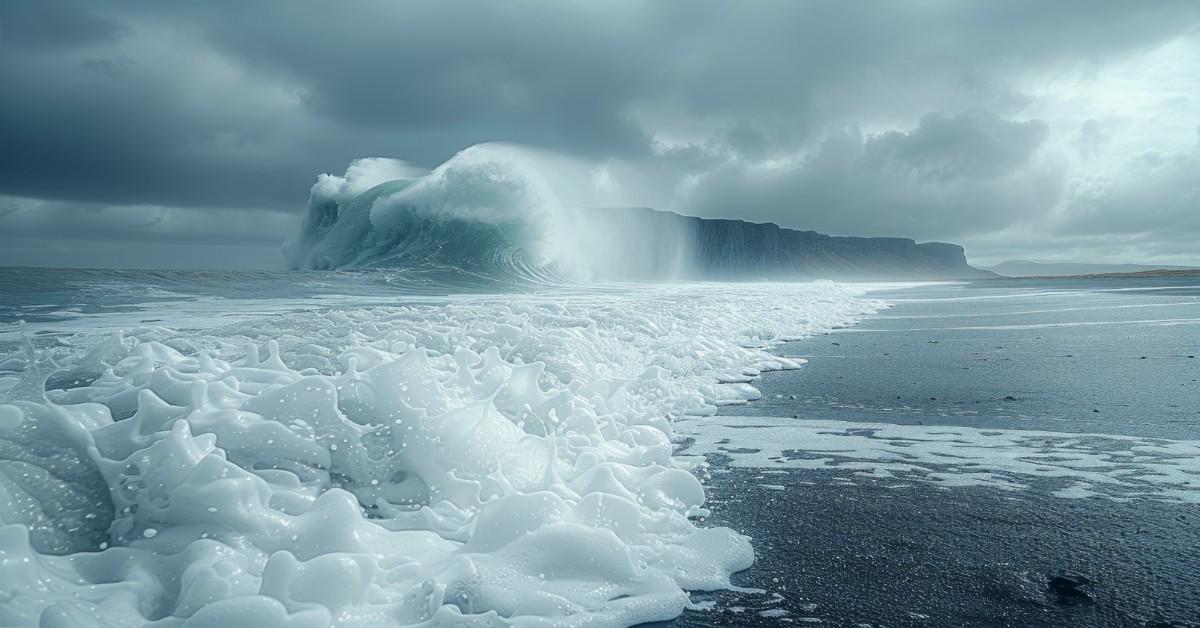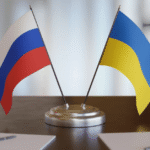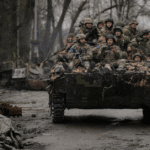Okay, imagine this. You’re staring at a map, and there’s this massive, blank white space at the bottom. Antarctica. It feels like the last true frontier, right? Mysterious, forbidden, almost… calling out. But here’s the kicker—it’s not just hard to survive there. It’s engineered by nature to kill you. Seriously. And it’s not just the cold.
After digging into that video—you know, the one titled “Why No One’s Allowed To Explore The Antarctic” by The Infographics Show—it’s crystal clear why this continent remains the ultimate no-man’s-land for permanent human life.
Forget cities. Forget farms. Forget just popping down for a casual visit. Antarctica is Earth’s most hostile environment. Period. Let’s break down exactly why calling it “impossible to survive in Antarctica” isn’t hyperbole—it’s cold, hard fact.
Why Is Antarctica Basically Off-Limits? The Treaty Truth
First things first. That feeling you get that Antarctica is forbidden? It kinda is. Not in a sci-fi “government conspiracy” way (mostly), but through a pretty remarkable piece of international law: The Antarctic Treaty System. Signed way back in 1959 by 12 countries (including big players like the US, USSR, UK), it’s grown to include over 50 nations.
The core idea? Keep Antarctica demilitarized, promote scientific cooperation, and crucially—set aside territorial claims. No country owns it. It’s a continent dedicated to… peace and science. Weird, right? In today’s world?
This treaty is the bedrock. It means:
No Military Stuff: Nukes? Military bases? Nope. Banned. It’s a weapons-free zone.
Science is King: The only major human activity allowed is scientific research. Those scattered bases? They’re labs, not towns.
Frozen Claims: Countries that thought they had dibs (like Argentina, Chile, UK, Australia, Norway, France, New Zealand) agreed to hit pause. No new claims. It’s in limbo.
Environmental Protections: Later agreements (like the Madrid Protocol) added serious environmental teeth—strict rules on waste, protecting wildlife, banning mining (until at least 2048). This continent is protected.
So, the “no exploring” vibe? It stems from this. You can’t just rock up, plant a flag, and start drilling for oil. Tourism is heavily regulated. Permanent settlement? Forget it. The treaty actively prevents the kind of colonization or exploitation you’d see anywhere else. It keeps Antarctica wild and, frankly, deadly for long-term human habitation. The rules are there partly because survival is so insanely difficult—minimizing human impact is crucial when the environment is this fragile and punishing.
Beyond Cold: The Science of Why Antarctica Wants You Dead (5 Reasons)
Okay, “cold” is obvious. Duh. But let’s get specific, because the cold is just the opening act in Antarctica’s arsenal of annihilation.
The Deep Freeze: We’re talking record lows of -89.2°C (-128.6°F) recorded at Vostok Station. AVERAGE winter temps on the plateau hover around -60°C (-76°F). Coastal areas? “Milder,” but still a brutal -20°C to -30°C (-4°F to -22°F). At these temperatures:
Exposed skin freezes in minutes (frostbite).
Metal becomes brittle and sticks to flesh.
Standard machinery and fuel just… stop working. Imagine your car, your plane, your heater giving up the ghost.
Breathing the air feels like fire in your lungs. Seriously painful.
The Wind That Slices: Forget breezy. Antarctica is home to Katabatic Winds. Cold, dense air builds up on the high polar plateau and then plummets down towards the coast under gravity. These aren’t gusts; they’re sustained, hurricane-force rivers of ice. Speeds regularly exceed 100 km/h (62 mph), and can hit 200 km/h (124 mph) or more. The video emphasizes these winds are a primary killer. They:
Create instant, blinding whiteout conditions (snow whipped up, zero visibility).
Amplify the cold exponentially through wind chill. -30°C with a 50 km/h wind feels like -50°C. It literally strips heat from your body faster than you can produce it.
Can physically knock people over, destroy structures, and sculpt the ice into treacherous formations.
The Dry Desert: Surprise! Antarctica is technically the world’s largest desert. Most of it gets less than 200 mm (8 inches) of precipitation per year (mostly snow, obviously). The interior gets closer to 50 mm (2 inches). This extreme dryness means:
Dehydration is a constant, sneaky threat. You don’t sweat visibly, but you lose massive amounts of moisture just breathing the dry air.
It contributes to the intense cold—dry air holds less heat.
Combined with wind, it causes rapid sublimation (ice turning directly to vapor), further desiccating the environment.
The Darkness (and Light): Thanks to the tilt of the Earth, Antarctica experiences extreme seasons:
Polar Night: Winter months (approx. March-September) bring 24-hour darkness over the continent. Months without sun. Imagine the psychological toll—constant night, freezing cold, isolation. Seasonal Affective Disorder (SAD) on steroids.
Midnight Sun: Summer (approx. September-March) means 24-hour daylight. Sounds nice? It wreaks havoc on sleep patterns and circadian rhythms. Constant sun can be just as mentally taxing as constant darkness for some.
The Isolation & Terrain: Antarctica is roughly 1.5 times the size of the USA. Vast. Empty. Distances are colossal. The terrain is a nightmare—crevasses hidden by thin snow bridges, unstable ice shelves, towering mountains, glaciers. Rescue? If something goes wrong far inland, it could take weeks for help to arrive, if weather permits. Which it often doesn’t. Medical emergencies become death sentences quickly. The sheer remoteness is a survival challenge in itself.
Lessons Written in Ice: History’s Harsh Antarctic Warnings
We didn’t just wake up one day and decide Antarctica was deadly. We learned the hard way. The Heroic Age of Antarctic Exploration (late 1800s to early 1920s) is littered with tales of incredible bravery and devastating loss. These stories hammer home the “impossible to survive in Antarctica” reality.
Robert Falcon Scott’s Terra Nova Expedition (1910-1913): The most tragic cautionary tale. Scott aimed for the South Pole. He reached it on January 17, 1912… only to find Roald Amundsen’s Norwegian flag planted there 34 days earlier. The crushing disappointment was just the beginning. On the return journey, everything went wrong.
The Cold: Unseasonably brutal temperatures, way below expected.
The Wind: Fierce headwinds slowed progress to a crawl.
Scurvy & Starvation: Supplies ran low, logistics failed. They were burning far more calories than they could replace.
Frostbite: Debilitating injuries became common.
The Final Blow: Trapped in a blizzard just 11 miles from a critical supply depot, Scott and his last two companions perished. Scott’s final diary entry is haunting: “For God’s sake look after our people.” The entire polar party died. The video underscores how Scott’s reliance on man-hauling sledges (vs. Amundsen’s expert use of dogs) and some poor planning choices were fatally exposed by Antarctica’s unrelenting hostility. It wasn’t just bad luck; it was the continent defeating human effort.
Sir Ernest Shackleton’s Endurance Expedition (1914-1917): While not a direct polar attempt, this story defines survival against the odds. Shackleton aimed to cross the continent. His ship, the Endurance, got trapped and crushed by pack ice in the Weddell Sea. Stranded on the ice, then on desolate Elephant Island, Shackleton and five others undertook an unimaginable 800-mile open boat journey in the James Caird lifeboat across the world’s stormiest ocean to reach South Georgia.
Then, they crossed its uncharted, glacier-covered mountains on foot. Miraculously, he returned to rescue every single one of his men. While a triumph of leadership and human spirit, the Endurance saga screams the power of Antarctica to destroy human vessels and plans utterly. They survived despite Antarctica, not because it was habitable.
These expeditions—and others—taught brutal lessons: respect the cold, understand the wind, plan meticulously for the worst, use appropriate technology (dogs, skis), and know that Antarctica shows no mercy. The margin for error is zero.
Modern Antarctica: Survival Today is Still a High-Tech Balancing Act
So, we have research stations now. People live there year-round! Does that mean survival is possible? Well… yes, but barely, and only under incredibly controlled, resource-intensive, temporary conditions. It’s survival by the skin of our technological teeth.
The Research Stations: Think McMurdo (USA), Amundsen-Scott South Pole (USA), Vostok (Russia), Halley (UK), and others. These are not towns. They’re scientific outposts.
Engineering Marvels: Built on stilts to avoid snow burial, designed to withstand hurricane-force winds and crushing snow loads. Constantly maintained.
Life Support Systems: Heavily insulated, powered by generators burning imported fuel (usually aviation fuel). Sophisticated heating and ventilation is life-or-death.
Supply Lines: Everything—food, fuel, equipment, spare parts—is flown or shipped in during the brief summer window. A single fresh orange costs a fortune. There is no local food source beyond what scientists study. Self-sufficiency? Impossible.
The Winter-Over: A few hundred people (scientists and essential support staff) “winter-over” at each station. They are completely cut off from the outside world for 6-9 months. No flights in or out. Medical emergencies? The station doctor is it. Serious cases must wait for spring. It’s isolation like nowhere else on Earth. The psychological screening is intense—you need the right temperament to handle the confinement and stress.
Tourism: A Glimpse, Not a Stay: Yes, you can visit Antarctica as a tourist. Around 50,000-100,000 people might visit in a good summer season (pre-pandemic numbers). But it’s tightly controlled:
IAATO Rules: The International Association of Antarctica Tour Operators sets strict guidelines. Visits are short (hours or days), confined to specific, relatively accessible coastal areas (like the Antarctic Peninsula).
Ships Only: You live on the ship. Landings are brief, supervised, and follow strict bio-security protocols (cleaning boots, no food, no leaving anything behind).
No Independence: You cannot wander off. You cannot camp independently without special permits (rarely granted). It’s Antarctica on a very, very short leash. The video stresses that tourism is a privilege under the Treaty, not a right, and constantly balanced against environmental risks.
The Constant Threats Remain: Modern tech doesn’t negate Antarctica’s fury. Research stations still get isolated by storms. Whiteouts still strand people. Machinery still fails in the cold. Crevasses still claim lives. Hypothermia, frostbite, falls, and environmental exposure are ever-present dangers. Medical evacuation is complex, expensive, and often delayed by weather. Living there is an ongoing exercise in risk management.

What Does the Future Hold? Ice, Uncertainty, and Fragility
Antarctica isn’t static. It’s changing, and those changes have global implications. Its “impossible to survive” nature makes it a critical indicator for our planet’s health.
Climate Change Frontline: Antarctica is warming faster than almost anywhere else. The video touches on the alarming collapse of ice shelves (like Larsen A and B). Glaciers are retreating at an accelerating pace. This isn’t just about polar bears (which aren’t in Antarctica!). It’s about:
Sea Level Rise: The Antarctic Ice Sheet holds about 60% of the world’s fresh water. If it melted completely (a long-term, catastrophic scenario), global sea levels would rise by roughly 60 meters (200 feet). Even partial melting from West Antarctica is a major concern for coastal cities worldwide within this century. Current estimates suggest Antarctica’s melt is contributing significantly to rising oceans.
Ocean Currents: Meltwater pouring into the Southern Ocean could disrupt global ocean circulation patterns (like the Gulf Stream), impacting weather systems worldwide.
Albedo Effect: White ice reflects sunlight. As it melts, darker ocean or rock absorbs more heat, accelerating warming—a dangerous feedback loop.
The Treaty’s Future: The ban on mining is up for review in 2048. What happens then? Will the treaty hold? Growing global resource needs and geopolitical tensions could put immense pressure on the “continent for peace and science.” The environmental protections are strong now, but their future is not guaranteed. Will nations cooperate as climate impacts bite harder?
Scientific Importance Grows: Understanding Antarctica is key to understanding Earth’s climate system, past and future. Research on its ice cores (revealing ancient atmospheres), unique ecosystems (thriving in extreme cold), and geology is more vital than ever. Maintaining the scientific mission, despite the survival challenges, is crucial for humanity.
Tourism Pressure: As access potentially becomes easier (warmer temps, longer seasons?), managing the environmental impact of tourism will be a major challenge. Balancing the human desire to see this wonder with its extreme fragility is critical. One major oil spill or introduced species could be devastating.
Conclusion: The Ultimate Testament to Nature’s Power
So, is it impossible to survive in Antarctica? For permanent, independent, self-sustaining human life? Absolutely, unequivocally yes. The Antarctic Treaty recognizes this by forbidding claims and settlement. History screams it through the frozen bodies of explorers like Scott. Modern science confirms it daily—survival hinges on massive external support and constant technological vigilance against an environment that is perpetually hostile.
Antarctica is more than just cold. It’s a continent defined by killing winds, crushing isolation, months of darkness, and terrain designed to trap the unwary. It’s a desert locked in ice. The research stations are marvels, but they are fragile bubbles in a vast, lethal wilderness. Tourism offers a glimpse, but only under strict supervision and for fleeting moments.
This impossibility isn’t just a curiosity. It’s a profound statement. Antarctica remains the last great wilderness, largely untouched because it is so inhospitable. It serves as a crucial regulator of our global climate, a unique scientific laboratory, and a powerful reminder of the raw, untamed power of the natural world. It humbles us. It shows us the limits of human endurance and technology. And in an era of climate change, its frozen expanse holds secrets about our planet’s past and future that we desperately need to understand. We must protect this impossible place, not just because it’s beautiful or unique, but because its survival is intricately linked to our own.
The enduring truth? Antarctica doesn’t need us. We need to respect it—from a very safe distance. Its harshness is its shield, and its survival as a pristine wilderness depends on us remembering just how impossible it truly is for us to call it home. Want to explore the extremes humans can push through? Understanding Antarctica is the ultimate case study. Dive deeper into incredible human resilience at gemscor.com.
FAQs: Your Burning Questions About Surviving Antarctica Answered
Is it really illegal to live in Antarctica? Not “illegal” per se for an individual, but effectively impossible. The Antarctic Treaty forbids any permanent settlement, military activity, or mineral mining. Only temporary scientific research stations are permitted. No country allows its citizens to establish permanent residency.
Can you go to Antarctica without permission? Practically, no. Access is tightly controlled. Tourists must go through licensed operators adhering to strict IAATO guidelines. Scientists need permits from their national Antarctic programs and Treaty requirements. Independent travel is extremely difficult and highly discouraged (and dangerous!).
What is the coldest temperature ever recorded in Antarctica? -89.2°C (-128.6°F) at the Soviet (now Russian) Vostok Station on July 21, 1983.
Has anyone been born in Antarctica? Yes, but very few (around 11 documented). These were births to parents stationed at research bases (e.g., Chilean, Argentine bases). It doesn’t grant citizenship or residency rights. Antarctica has no native human population.
How do people survive the winter in Antarctica? In heavily fortified, well-supplied research stations. They rely on imported food and fuel, sophisticated heating/power systems, strict routines, strong mental health support, and a small, close-knit community. They are completely isolated for months.
Why is Antarctica so important scientifically? Its ice cores hold ancient climate records. It drives global ocean currents and weather patterns. Its unique ecosystems show life in extremes. Studying it is crucial for understanding climate change, geology, astronomy (clear dark skies!), and biology.
What are katabatic winds? Extremely strong, cold winds that flow downhill from the high polar plateau towards the coast under gravity. They are a primary danger, causing whiteouts and severe wind chill.
Did Roald Amundsen survive his South Pole expedition? Yes. Amundsen’s team reached the South Pole first on December 14, 1911. They used dog sleds expertly and planned meticulously, returning safely to their base.
What happened to Scott’s body? Scott and his two remaining companions (Wilson and Bowers) were found in their tent by a search party the following spring (November 1912), just 11 miles from a supply depot. The tent was collapsed over them. Their bodies, journals, and specimens were recovered.
Is there any wildlife that lives permanently in Antarctica? Yes! Penguins (Emperor, Adélie, etc.), seals (Weddell, Leopard, Crabeater), whales, seabirds (skuas, petrels), and unique marine life (krill, fish adapted to freezing water). No land mammals or permanent land-based creatures beyond microbes and tiny invertebrates.
How thick is the Antarctic ice sheet? On average, about 2,160 meters (7,090 feet) thick. In some areas, it exceeds 4,800 meters (15,700 feet) thick. It contains a massive amount of the world’s fresh water.
What would happen if all the ice in Antarctica melted? Global sea levels would rise by approximately 60 meters (200 feet), inundating vast coastal areas worldwide. This is a long-term scenario, but even partial melting has significant impacts.
Is there any soil or land under the ice in Antarctica? Yes! Antarctica is a continent with mountains, valleys, and bedrock beneath the ice sheet. Some areas, like the Dry Valleys, have exposed, ice-free ground (though still extremely harsh).
Who governs Antarctica? No single country governs it. It’s managed collectively by the signatories of the Antarctic Treaty System through regular consultative meetings. Decisions are made by consensus.
Can you see the Northern Lights in Antarctica? You see the Southern Lights, or Aurora Australis! Similar phenomenon, caused by solar particles interacting with the atmosphere near the magnetic poles. Winter nights offer spectacular displays.














